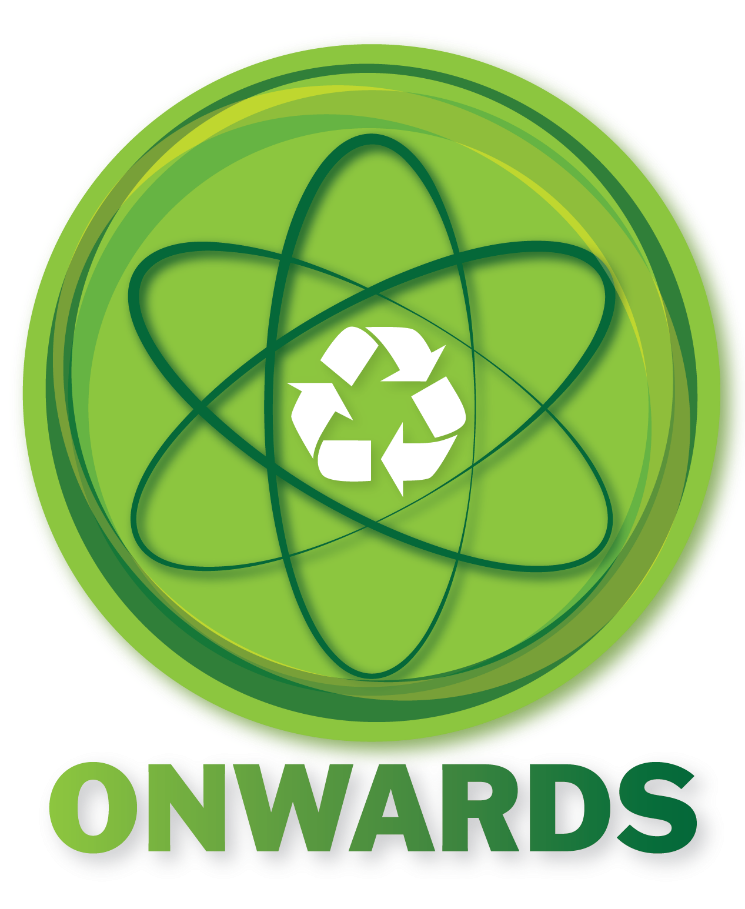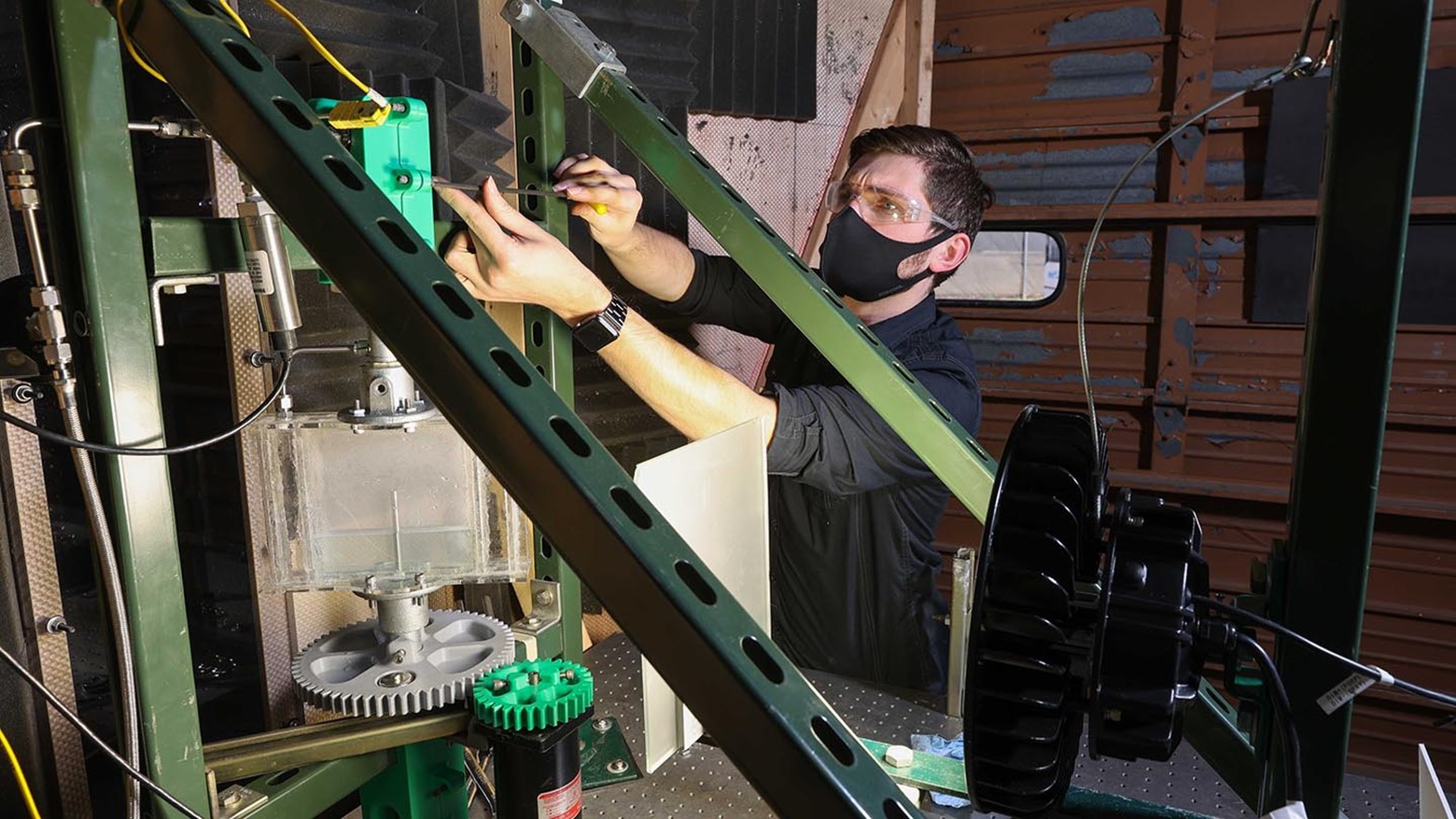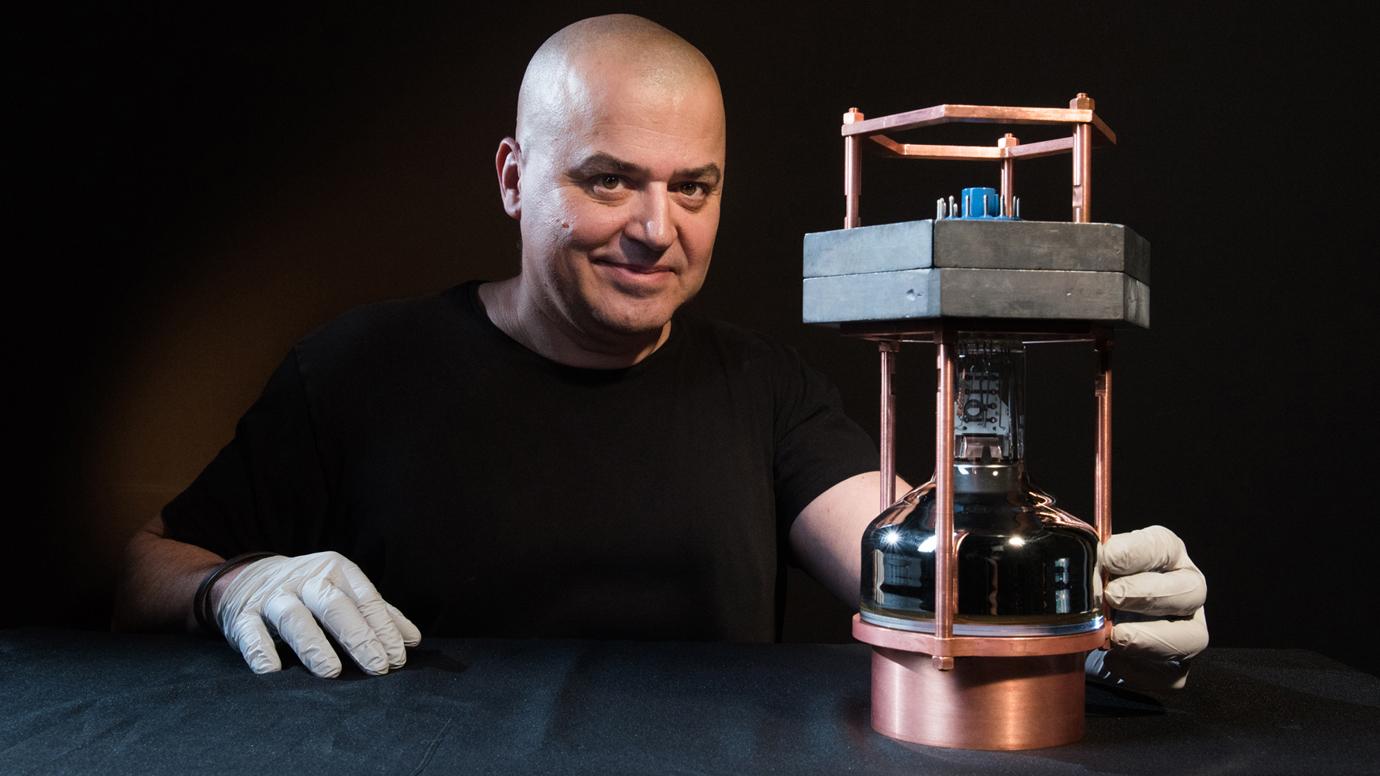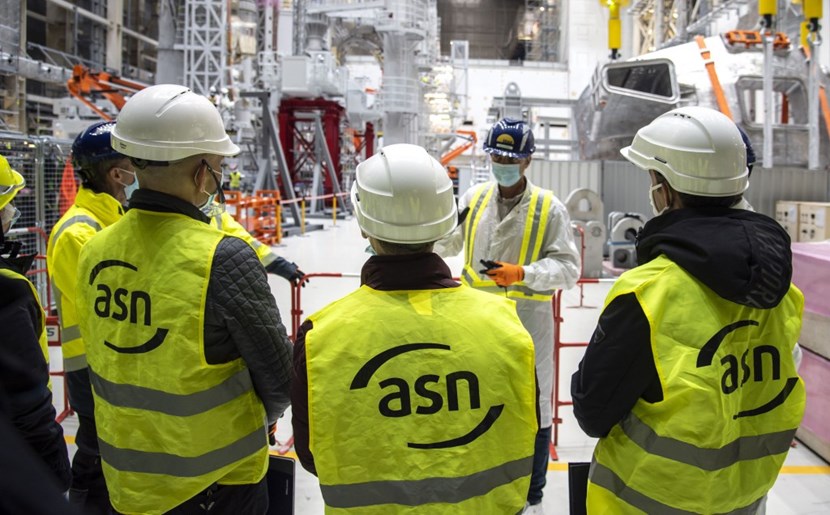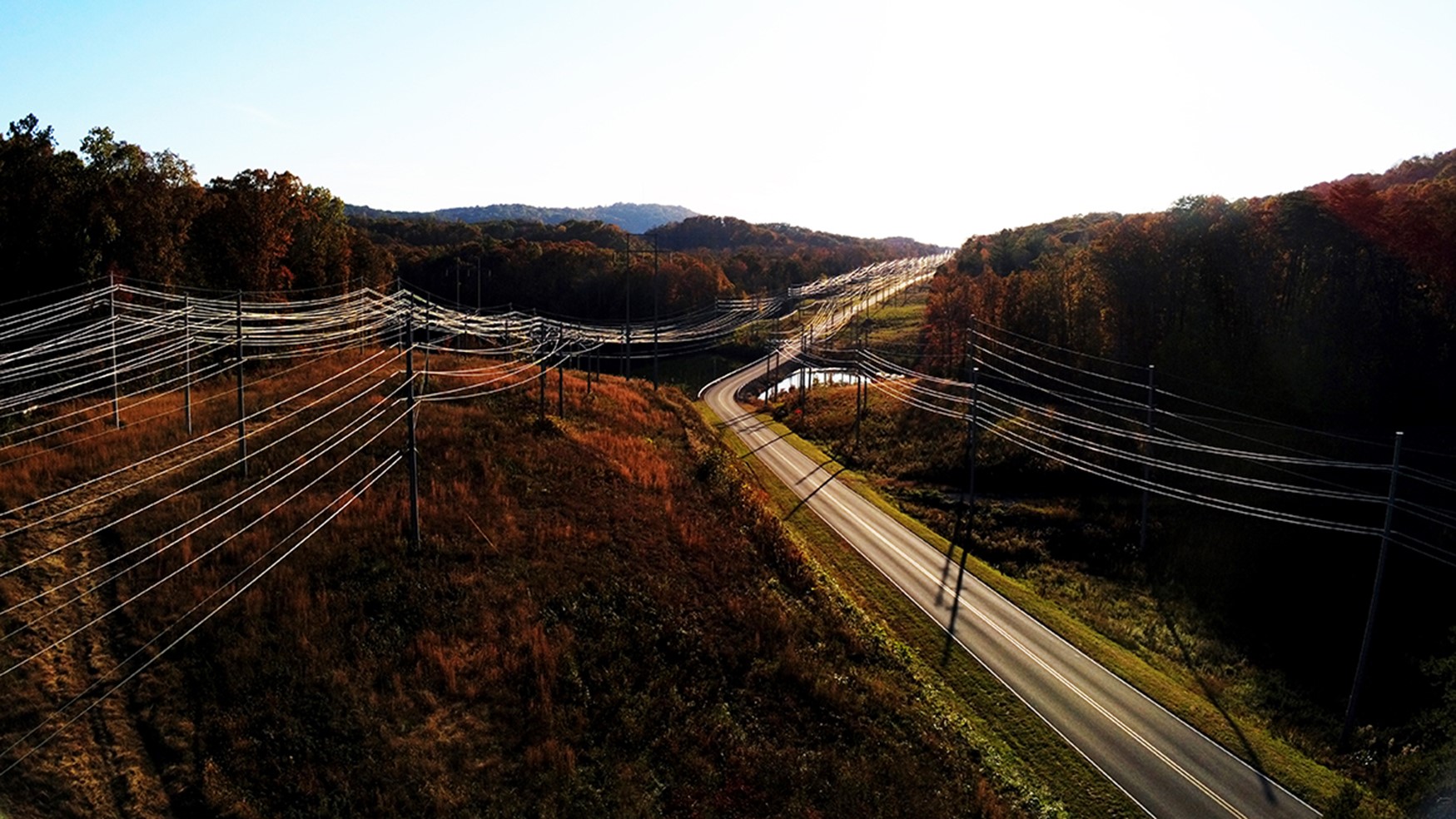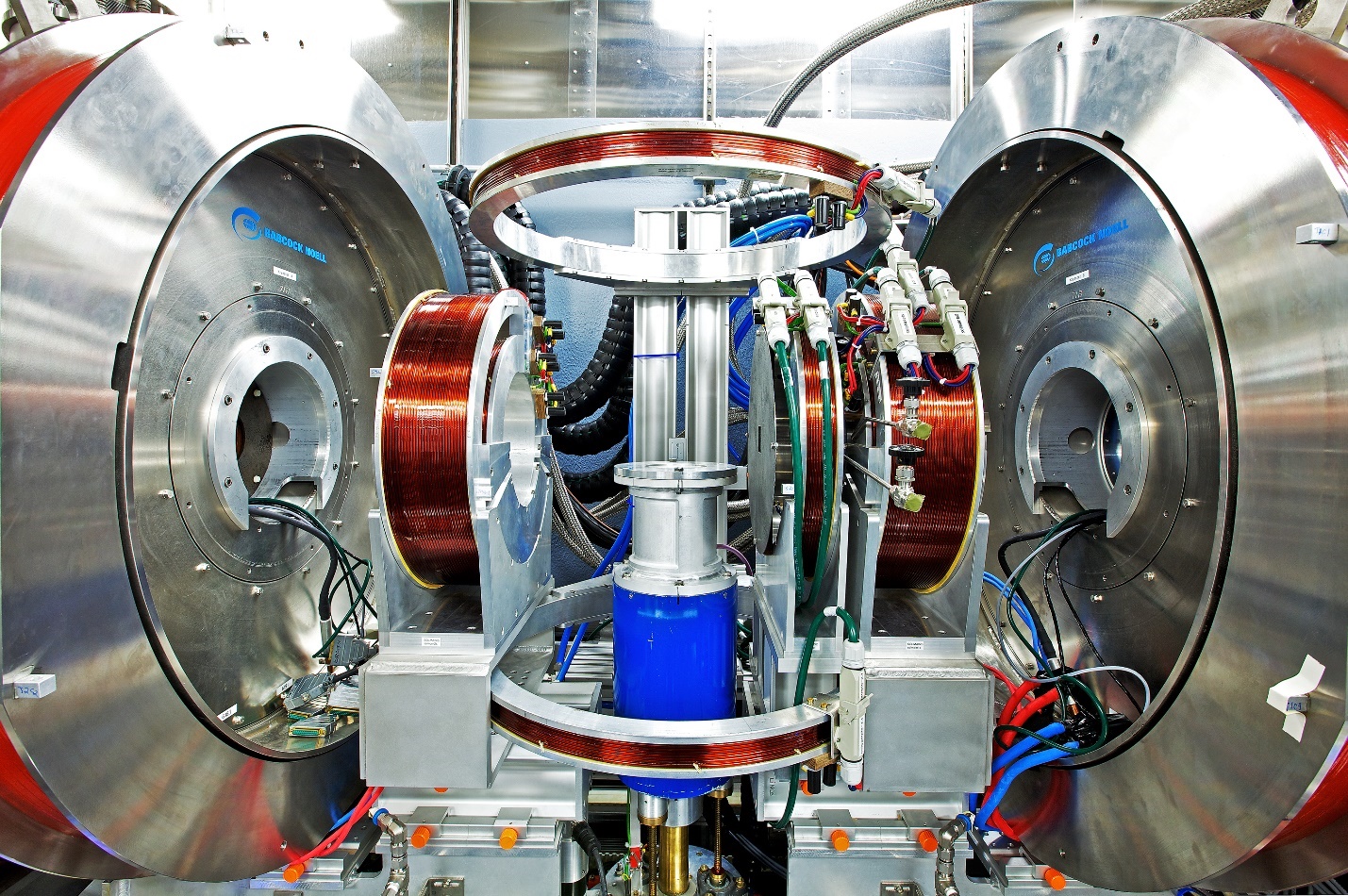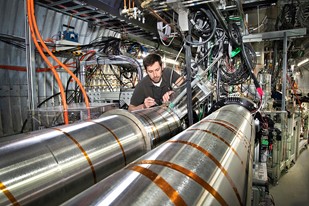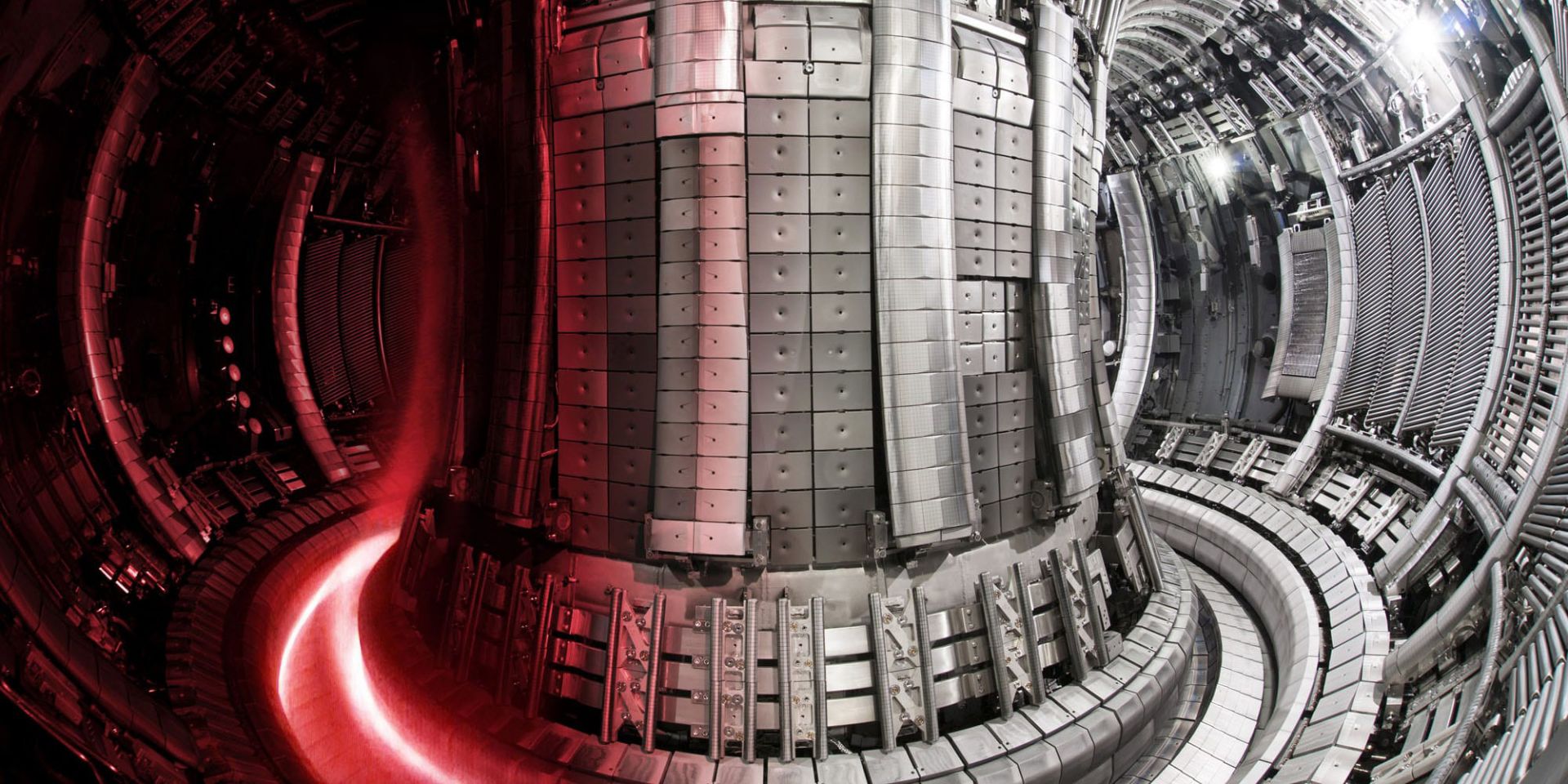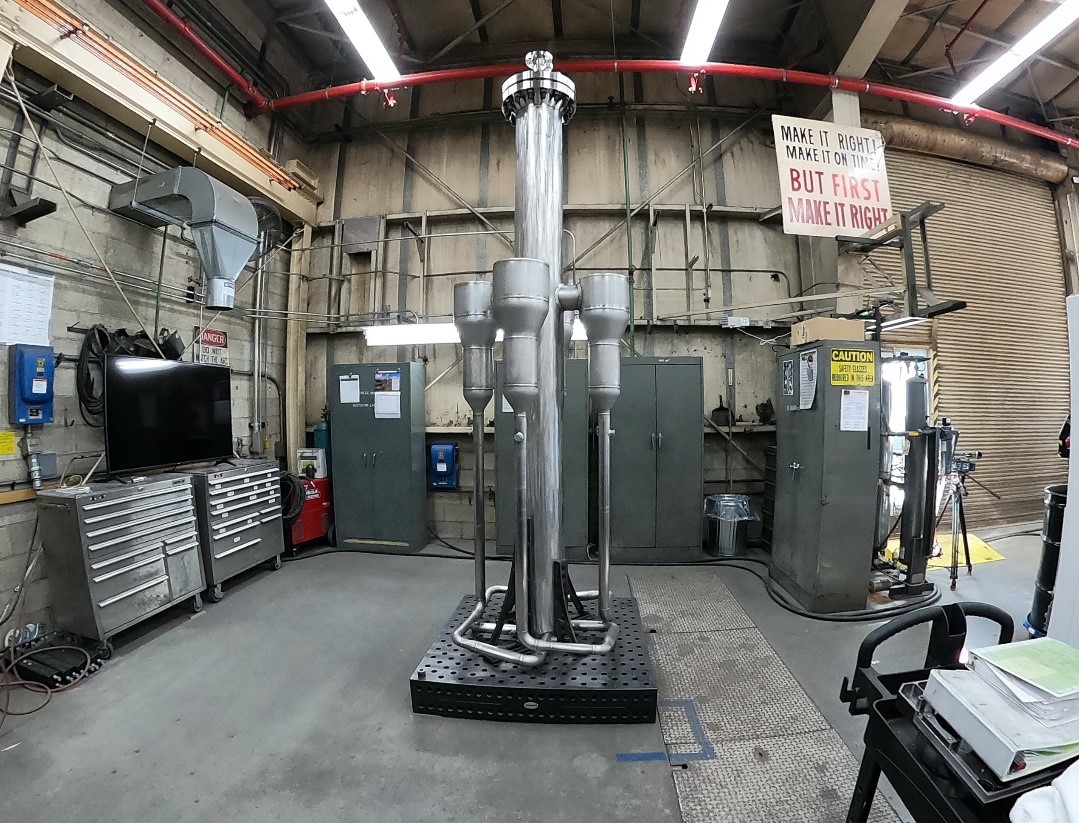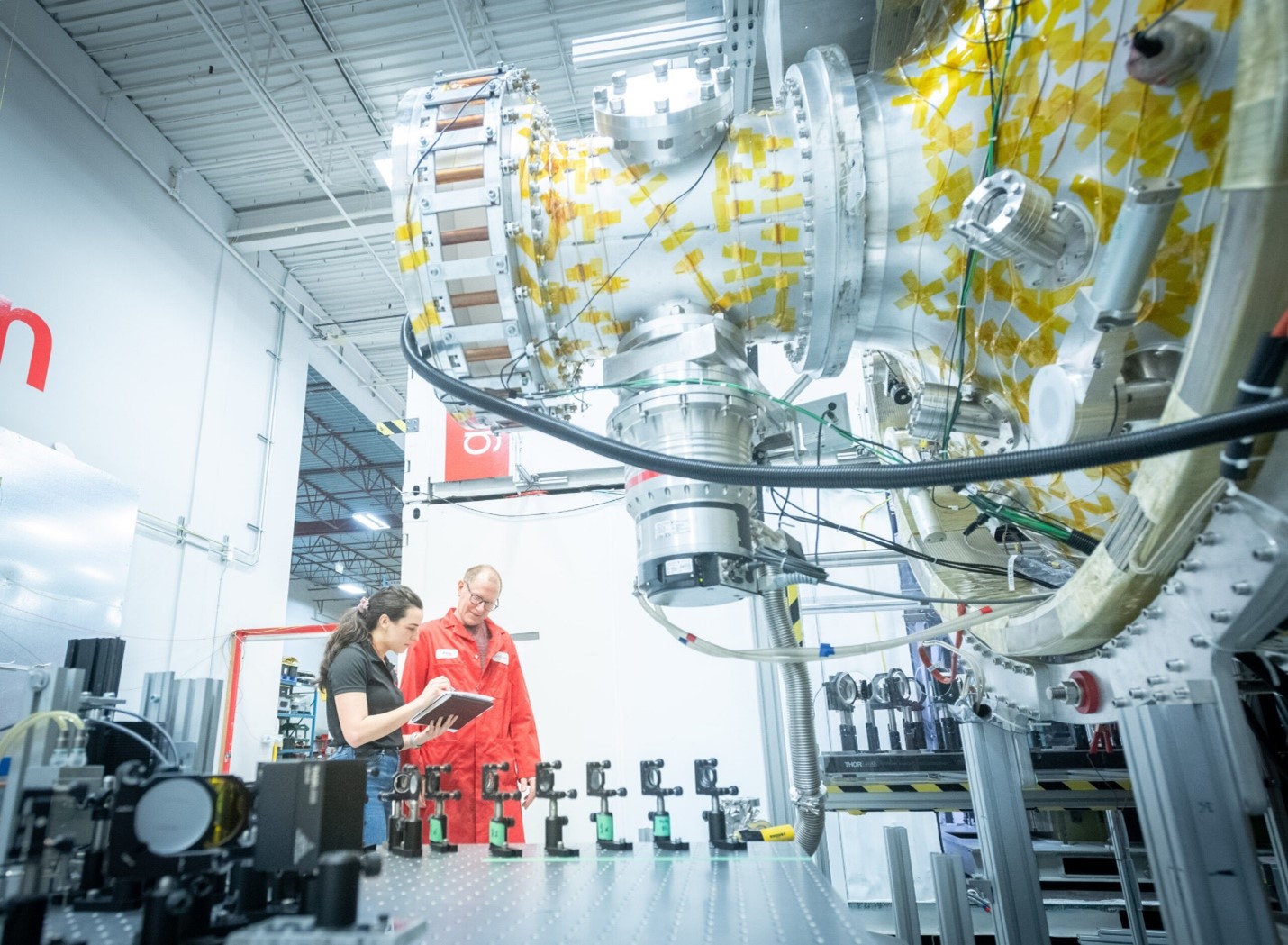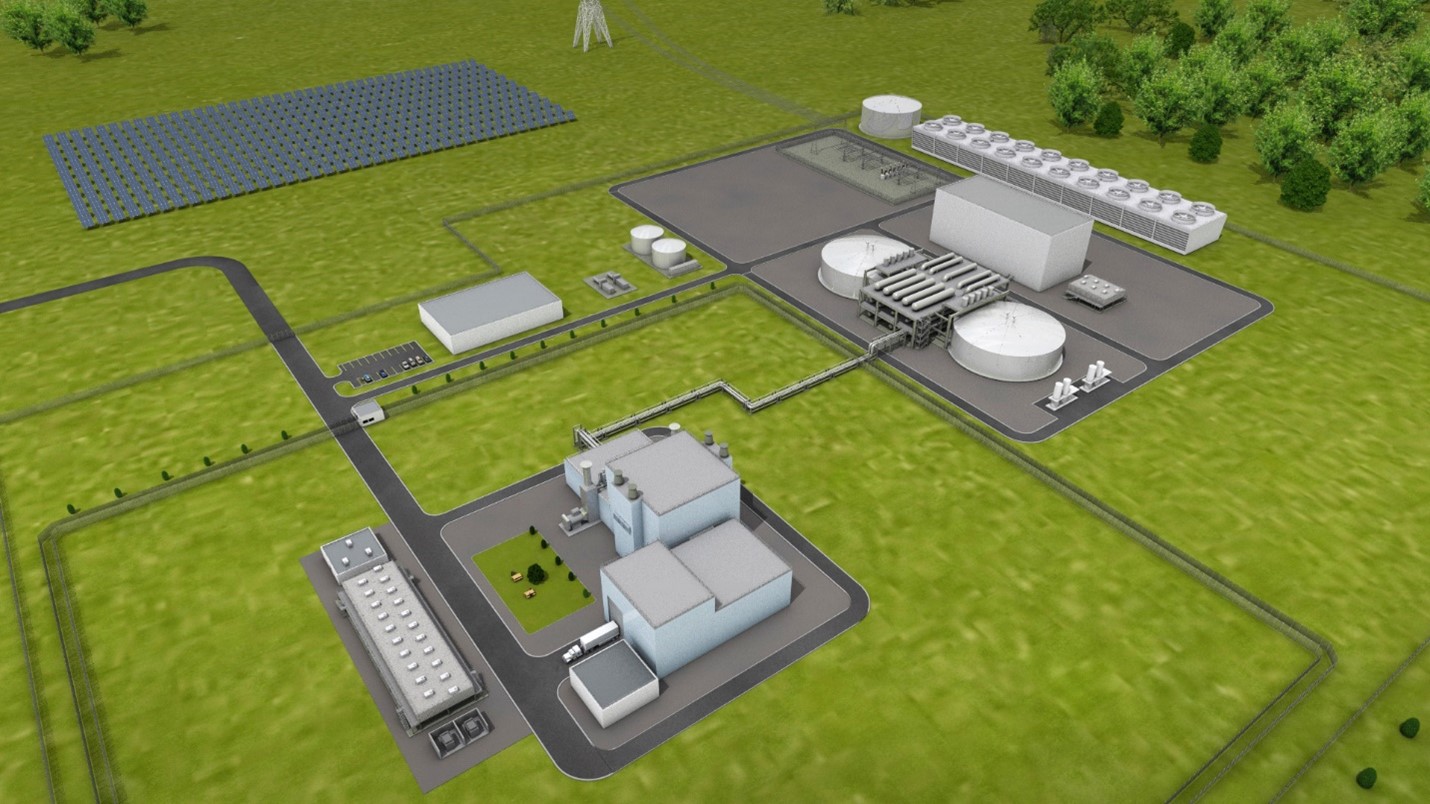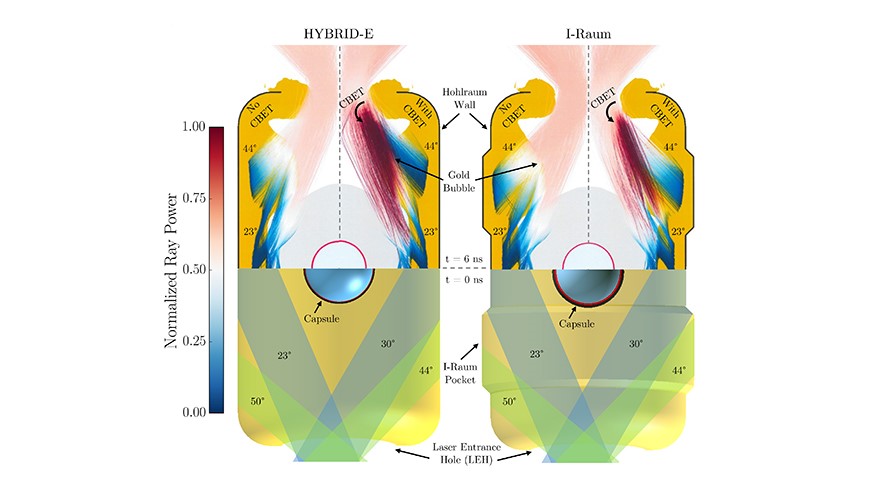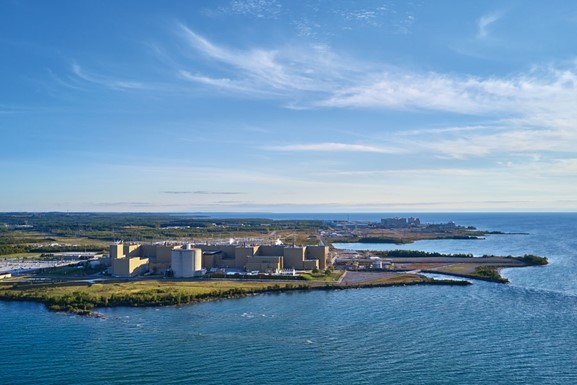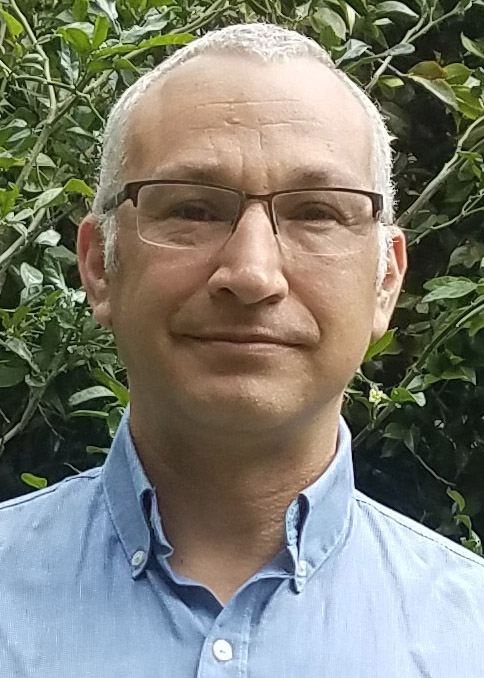Ben Campbell, a graduate research assistant and master’s degree student in aerospace systems engineering, works on the Bubbling Liquid Experiment Navigating Driven Extreme Rotation, or BLENDER, device at UAH’s Johnson Research Center. (Photo: UAH/Michael Mercier)
With three commercial teams under contract to produce reactor designs for nuclear thermal propulsion rockets that would use solid high-assay low-enriched uranium fuel to heat hydrogen propellant, NASA’s investment in nuclear thermal propulsion (NTP) has increased in recent years. But just as there is more than one way to fuel a terrestrial reactor, other fuels are under consideration for future NTP rocket engines.
Juan Collar led a team of UChicago physicists who built a lightweight, portable neutrino detector to observe the elusive interactions of the ghostly particles. (Photo: Jean Lachat)
Constellation Energy’s Dresden nuclear power plant in Illinois is helping University of Chicago researchers to detect neutrinos in an effort to advance knowledge of the fundamental laws governing particle and nuclear interactions. The researchers are taking advantage of the large number of neutrinos generated by Dresden’s boiling water reactors to conduct experiments, using what UChicago calls the world’s smallest neutrino detector to track and record the ghostlike particles.
Approval from French regulator ASN is required before ITER vacuum vessel welding can begin. (Photo: ITER)
In a February 28 article posted on the ITER Organization website, Gilles Perrier, head of ITER’s Safety and Quality Department, addressed the decision by French nuclear safety regulator ASN (Autorité de sûreté nucléaire) to delay the anticipated February 1 release of a preset tokamak assembly “hold point.”
High-voltage power lines carry electricity generated by the Tennessee Valley Authority to Oak Ridge National Laboratory. (Photo: Dobie Gillispie/ORNL, DOE)
The Tennessee Valley Authority and Oak Ridge National Laboratory have signed a memorandum of understanding to advance decarbonization technologies in pursuit of the federal government’s net-zero-by-2050 goal, the utility and the lab announced yesterday in a joint press release.
Instrumentation at Oak Ridge National Laboratory’s Spallation Neutron Source, an accelerator-based facility that provides the most intense pulsed neutron beams in the world for scientific research and industrial development. (Photo: ORNL)
Researchers advancing particle accelerator technology for medical, security, energy, and industrial applications have a new funding opportunity announced on February 16 by the Department of Energy’s Office of Science (DOE-SC). The funding will support research to advance particle accelerator technology for medical, security, energy, and industrial applications. Grants will be awarded for work focused on innovation, technology transfer, and supply chain resiliency that falls under one of two DOE-SC programs: the Accelerator Stewardship program, which supports cross-disciplinary teams to solve high-impact problems, and the Accelerator Development program, which is aimed at strengthening domestic suppliers of accelerator technology.
The Relativistic Heavy Ion Collider at Brookhaven National Laboratory. (Photo: DOE)
The Department of Energy has announced an $18 million funding opportunity for research and development in particle accelerator science and technology for nuclear physics research. Provided through the DOE’s Office of Science, the funding is intended to support “efforts essential to developing world-leading core competencies and transformative technologies that significantly advance the state-of-the-art accelerator capabilities.”
The interior of JET with a superimposed plasma. (Image: EUROfusion)
A new record has been set by the world’s largest operating tokamak, the Joint European Torus (JET). According to the EUROfusion scientists and engineers who work on JET at the U.K. Atomic Energy Authority’s Culham Centre for Fusion Energy, the landmark experiment, announced on February 9, which produced 59 megajoules of fusion energy over five seconds, is powerful proof of fusion’s potential as a clean energy source.
The MARVEL microreactor prototype in the INL machine shop. (Photo: DOE)
A full-scale, electrically heated prototype for the Department of Energy’s Microreactor Applications Research Validation and Evaluation (MARVEL) project was fabricated in just nine months, according to an article published by Idaho National Laboratory on January 31. The article explains in part how a team from the lab’s machine shop created the prototype.
General Fusion is aiming to operate a fusion demonstration plant in 2025. (Photo: Bruce Power/General Fusion)
Bruce Power, General Fusion, and the Nuclear Innovation Institute have signed a memorandum of understanding to evaluate the potential deployment of a fusion power plant in Ontario, including in a region on the shores of Lake Huron comprising three counties—Bruce, Grey, and Huron—that has been dubbed the Clean Energy Frontier. Together the three organizations plan to build on existing clean energy technologies and expertise in the region and lead stakeholder and public outreach activities to raise awareness of the potential benefits of fusion energy.
A rendering of the Natrium plant. (Image: TerraPower)
Natrium, a 345-MWe sodium fast reactor with a molten salt energy storage system, was developed by TerraPower and GE Hitachi Nuclear Energy. TerraPower is planning to build the first Natrium demonstration reactor by 2028 with 50-50 cost-shared funding of about $2 billion from the Department of Energy’s Advanced Reactor Demonstration Program. And for the requisite data and testing of reactor components to support that deployment, TerraPower is looking to Japan—a country with decades of experience developing sodium fast reactor designs and testing infrastructure.
An illustration of the two inertial confinement fusion designs reaching the burning plasma regime, as published in a recent article in Nature. (Image: LLNL)
One of the last remaining milestones in fusion research before attaining ignition and self-sustaining energy production is creating a burning plasma, where the fusion reactions themselves are the primary source of heating in the plasma. A paper published in the journal Nature on January 26 describes recent experiments at Lawrence Livermore National Laboratory’s National Ignition Facility (NIF) that have achieved a burning plasma state.
Bruce nuclear power plant in Ontario, Canada. (Photo: Bruce Power)
Bruce Power and Isogen, a partnership between Kinectrics and Framatome, have completed the installation of Isogen’s isotope production system (IPS) at Unit 7 of Bruce’s CANDU nuclear power plant in Ontario, Canada, making it the first power reactor in the world with installed capability to produce lutetium-177.
Schools distributed information about the pilot trial in their communities, and schoolchildren participated in the biweekly release of sterilized male mosquitoes. (Photo: Manuel Fernández, Cuban Agency of Nuclear Energy)
Cuba’s plan to use the sterile insect technique to tackle the spread of dengue—a viral, mosquito-borne disease—relies on expertise and technology from the International Atomic Energy Agency. The technique is not new, having been used to control different insect-vector diseases in diverse regions of the world.
Kurt Terrani observing a chemical vapor infiltration furnace at ORNL during densification of additively manufactured nuclear-grade silicon carbide. (Photo: Carlos Jones/ORNL/DOE)
Ultra Safe Nuclear Corporation (USNC), a Seattle-based reactor developer, has licensed an additive manufacturing technique developed at the Department of Energy’s Oak Ridge National Laboratory to print refractory materials into structural and core components for the company’s microreactor designs.
[CLICK TO VIEW FULL IMAGE] The diagram at left illustrates the experimental setup and the resulting zirconium oxide layer of varying thickness. The second diagram shows the circular zirconium alloy sample that is affected by the band of nickel alloy and radiation. Finally, the electron image at right shows a band of oxidation on the zirconium alloy sample. (Images: Peng Wang, Michigan Ion Beam Laboratory)
A longstanding issue in boiling water reactors—shadow corrosion on zirconium alloy fuel rods and fuel channels—has been reproduced in the Michigan Ion Beam Laboratory as part of an effort to understand and prevent the phenomenon. Research led by Peng Wang, a University of Michigan assistant research scientist in nuclear engineering and radiological sciences, was published in the January 2022 issue of the Journal of Nuclear Materials and described in a recent university news article.
